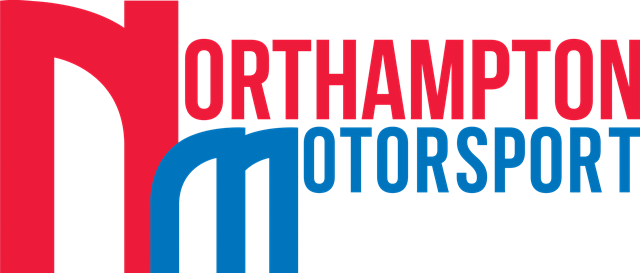4 Wheel Suspension Alignment &
Corner Weighting Service
Northampton Motorsport can offer a complete range of suspension & wheel alignment services from
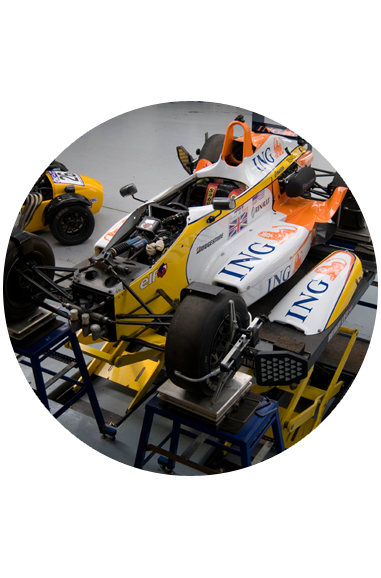
Introduction to Wheel Alignment
Why is correct wheel alignment important?
Have you ever noticed your tyres wearing more on one side than the other? Perhaps your car feels as if it pulls to one side? Or maybe your steering wheel isn’t straight?
These are all possible symptoms of misalignment and often lead to higher running costs as your tyres need replacing sooner or your fuel bills will be increased.
Misalignment can occur easily. Hitting a kerb, driving over a pothole, replacing a tyre or simple day to day wear and tear can all lead to your car suffering from misalignment.
As vehicle design has developed modern cars tend to have larger and lower profile tyres, along with sophisticated systems such as antilock brakes, traction control and dynamic stability programmes. Correct alignment is critical for these advanced safety systems to perform correctly without adverse tyre wear or handling issues.
For performance and competition cars, suspension set up is vital to ensure optimum grip, handling and performance. As well as carrying out the initial suspension set up Northampton Motorsport are happy to work with owners and drivers to analyse data and develop the optimum set up.
What are the benefits of correct wheel alignment?
By having your car properly aligned, you will benefit in a number of ways:
1. Improved tyre life – misalignment is a major cause of uneven or premature tyre wear. Correct alignment can significantly extend the life of your tyres.
2. Improved fuel consumption – cars suffering from misalignment will have higher fuel consumption as their wheels ‘drag’ along the road surface. Correctly setting the wheels straight reduces this resistance and gives you more miles per tank.
3. Greener motoring – with improved fuel consumption and lower tyre wear, your impact on the environment is reduced. You will also improve your own personal Carbon Footprint, by emitting less CO2 emissions.
4. Save money – by extending the life of your tyres and improving your fuel consumption, correct alignment will help lower your motoring costs.
5. Better handling – with the car’s geometry set as the vehicle manufacturer intended, wheel alignment can help correct many handling problems and deliver a more enjoyable driving experience.
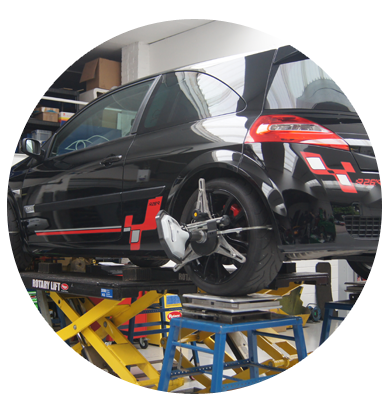
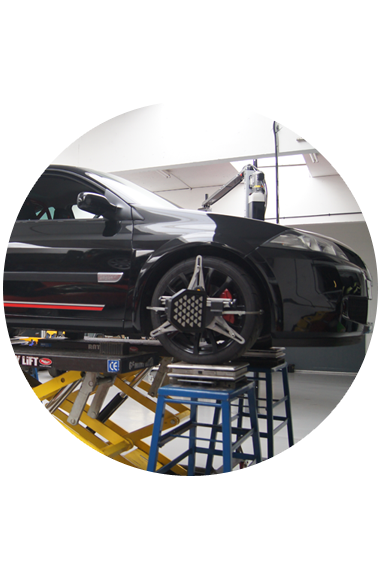
How does it work?
Before any measurements and adjustments can be made the car must be on a level surface with even tyre pressures. If the floor is not completely flat this will give inaccurate corner weight information and will also affect the wheel alignment readings.
The surface of our alignment bay has been excavated and then re-surfaced and is within 1mm across the whole of its surface. This means we can place the vehicle stands to accommodate different wheelbase and track dimensions with complete confidence that the car is level.
Our Hunter system uses the latest digital imaging technology to accurately measure in three dimensions the position of each wheel and the angle at which it sits on the road. The system uses four high definition cameras to look at targets attached to each wheel.
Once the basic measurement process has been completed the aligner software generates a complete 3D image of the vehicles wheel alignment. This means that adjustments can be made both with the vehicle on its wheels or jacked up for easy access to the suspension components, also caster adjustments can be made in real time.
The first part of the process is to raise the vehicle on our scissor lift to allow a clamp and target to be fitted to each wheel. Once fitted these targets are the reference points that the cameras look at and allow the software to generate a theoretical square box around the car. Each wheel then goes through a run out measuring process. This takes into account any slight distortions or buckle in each wheel. Once this is done the computer adjusts for any distortion automatically. Obviously if a wheel is very badly buckled this would need sorting before we could continue with the alignment.
The car is then lowered onto four stands, each with a radius plate on. These plates allow the suspension to settle naturally and the steering to turn without any abnormal loads. The cars brakes are locked on at this point and radius plates have safety stops so the car cannot move off the stands. Once all the measurements have been taken, any adjustments can then be made with the suspension in its loaded state.
The various screens on the computer allow for measurement/calculation of camber, caster, KPI or SAI, individual and total toe front and rear, set back and thrust axis, plus other calculated angles which indicate if the chassis is straight or not. The computer has a database of manufacturer’s specifications to allow actual settings to be compared with the cars original specification. Don’t worry if your car is a 1 off or has been heavily modified as we have years of experience which allow us to build a bespoke specification for your car. Be sure to check our our Wheel Alignment Gallery for examples of some the vehicles we have Wheel Alighted over the years.
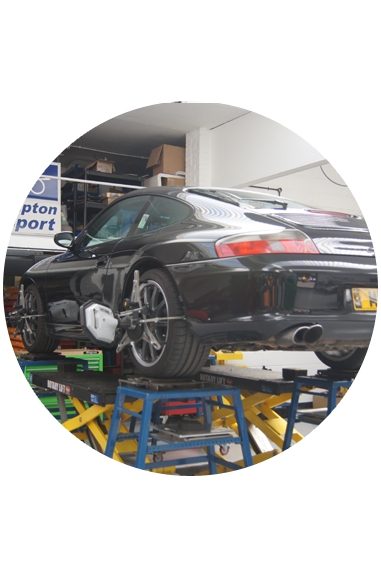

Corner Weighting
As the name suggests, this involves very accurately measuring the weight on all four wheels at the same time. What’s the point you may ask? Well, the amount of weight or pressure on each tyre will affect the amount of grip that tyre has. Ideally, all cars would have 25% of their total weight on each corner, as this would give completely neutral handling during cornering, acceleration and braking. Unfortunately, this is rarely true.
If a car has more weight on one side than the other then the heavier side will have more grip when braking and accelerating. At best, this imbalance will make the car feel nervous and in the worst cases, will cause loss of traction or wheel lock up.
If your car has adjustable spring platform shock absorbers, the platforms can be adjusted up or down to optimise the distribution of weight around the car. This allows us to take into account the manufacturing tolerances in the suspension and chassis and also to compensate for driver weight. Corner weighting can also be useful during the build of a car as once the major items whose position is fixed have been fitted, other items such as batteries, fire extinguishers etc., can be placed to optimise the weight distribution as much as possible.
With many cars it is not sufficient just to use ride height as a method of setting up adjustable platform shocks. Adjustment using ride height only as a reference does not take into account variables such as slight chassis twist or differing spring lengths and especially with many kit cars or rally cars using the body as a reference point is not advisable. This is due to inconsistent body mouldings or inaccurately repaired panel damage.
The scales we use are made by Intercomp and comprise of four very accurate measuring pads, each capable of taking 500 kilos.
The car is then lowered onto four stands, each with a radius plate on. These plates allow the suspension to settle naturally and the steering to turn without any abnormal loads. The cars brakes are locked on at this point and radius plates have safety stops so the car cannot move off the stands. Once all the measurements have been taken, any adjustments can then be made with the suspension in its loaded state.
The digital readout shows each wheel weight and the total weight. By selecting the front or rear axle or left or right side, we can look at the percentage distribution around the car. Finally, the results can be entered along with any other car set up data into our Intercomp race car management software. With your feedback on the cars performance this allows us to build up a detailed picture on your car and helps us decide on the best set up. This service is free of charge and we feel provides the competitor with a valuable tool to help extract the full potential of their car.
Corner weighting is an inexpensive method of fine tuning suspension and diagnosing the cause of handling problems even in standard road cars

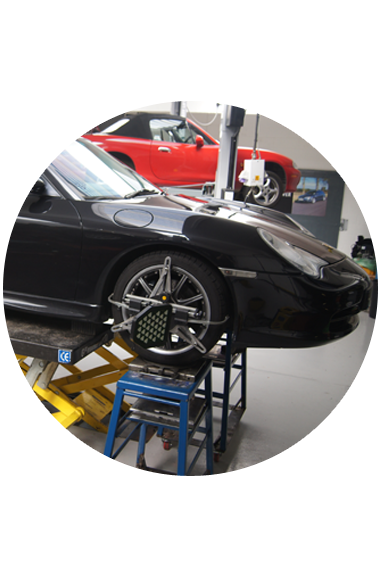
Wheel alignment costs for standard road cars starts at £90 plus vat. For track and competition cars full corner weighting and alignment works out around £225 plus vat. For an accurate estimate please Contact Us with your vehicle details.
